LLNL researchers have developed a method to of crosslinking, polymerizing or otherwise covalently coupling a subset of nitroaromatic and nitramine explosive molecules and compositions. Energetic materials manufactured using the novel method can be used ‘neat’ or as an energetic binder phase for another unmodified energetic compound. The approach may also be employed to co-…
Keywords
- Synthesis and Processing (21)
- Sensors (14)
- Additive Manufacturing (9)
- Imaging Systems (9)
- Photoconductive Semiconductor Switches (PCSS) (9)
- Semiconductors (7)
- Materials for Energy Products (6)
- Optical Switches (5)
- Ground Penetrating Radar (4)
- Material Design (4)
- Power Electronics (4)
- Defense Technologies (3)
- High Explosives (3)
- 3D Printing (2)
- Computing (2)
- Electric Grid (2)
- Instrumentation (2)
- Membranes (2)
- Rare Earth Elements (REEs) (2)
- Spectrometers (2)
Technology Portfolios
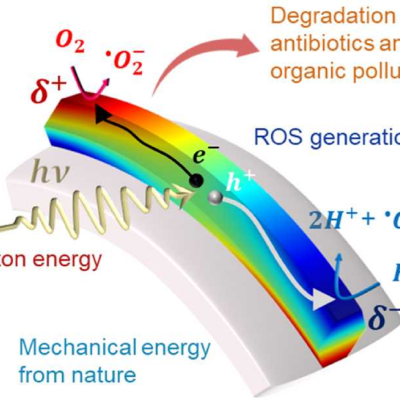
LLNL researchers have introduced the use of a kirigami inspired substrate to act as a mechanical transducer, which converts macroscale stretching motion into localized bending. The performance of photo-piezocatalysts made with aligned arrays of photocatalytic nanomaterials on the kirigami shaped substrate yields significant enhancements (~250%) in the degradation of dyes.
Image…

The approach is to use foundational materials science, structural design, thermal analysis, optic fabrication, and space systems engineering, and to use optimize them through large-scale simulation to realize meter-scale telescopes at 10X cost reduction. LLNL’s folded Gregorian design integrates all alignment sensitive components into one static monolithic system. Like solid-…
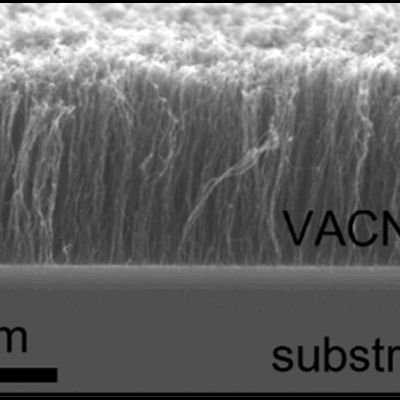
LLNL inventors have developed an electrochromic device containing Vertically Aligned single walled CNTs (VACNTs) with a range of diameters. The assembly of these devices into electrochromic windows filled with ionic liquid allows for reversible modulation of the Fermi level in the VACNT film. These electrochromic devices show strong voltage-dependent transmission of near-infrared…

LLNL developed a novel SOS diode structure starting with a n-type silicon wafer. On the appropriate sides of the wafer, donor and acceptor dopants with specifically designed and optimized concentration profiles are diffused in the structure. Crucially, an extra n-region is introduced to the structure to address pre-pulses. The result is a SOS diode with an optimized p+/p/n-…
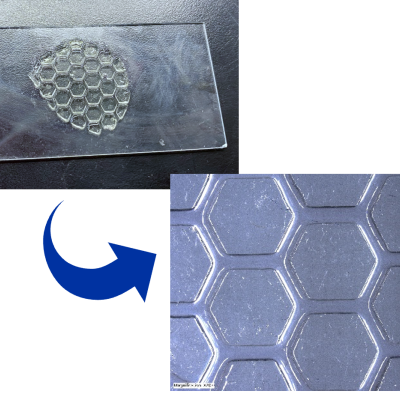
LLNL inventors have developed a photopolymer resin formulation that consists of a (1) pH labile monomers, (2) a photoinitiator, (3) a photoacid or photobase generator, (4) other additives including, reactive and unreactive diluents, and pH stabilizers. When exposed to radiation in a specific wavelength region, component 2 initiates polymerization with 1 to form a pH sensitive network.…

LLNL researchers have developed an approach to form silicon carbide (and diamond) nanoneedles using plasma etching that create micro pillars followed by chemical etching of the pillars in forming gas containing hydrogen and nitrogen. Combining these two etching processes allow for fabrication of micro- and nanoneedles that are thinner and sharper than conventionally fabricated needles.
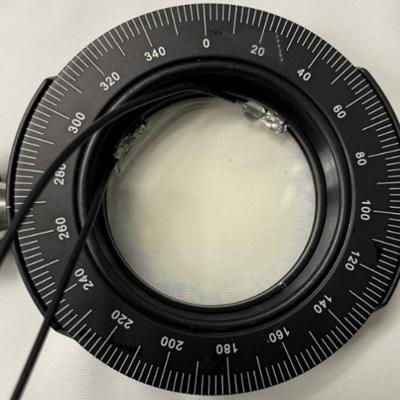
The approach is to use appropriately doped semi-insulating gallium nitride to provide a high damage tolerant photoconductor with high responsivity to various pump wavelength light. Mn, C, or Fe are used as dopants to provide a source of electrons or holes that can be excited. This is combined with the use of dichroic antireflection coating at the GaN/polyimide/liquid crystal…

LLNL researchers have developed a silicone based conductive, elastomeric 3D DIW printed structure with a lower wt.% conductive, composite filler to allow for the creation of 3D printed lattice structures with tunable conductivity. The conductivity of the printed structure can be varied using composition of the starting DIW ink formulation as well as the 3D printed spacing and…

This LLNL invention introduces a technique for optimally detuning the ADC and signal clocks while maintaining synchronization between the two to manage correlated errors in waveform processing. This technique maintains synchronization between the two clocks, but with optimal detuning applied the interleaving artifacts are maximally decorrelated across waveforms and thus suppressed with…
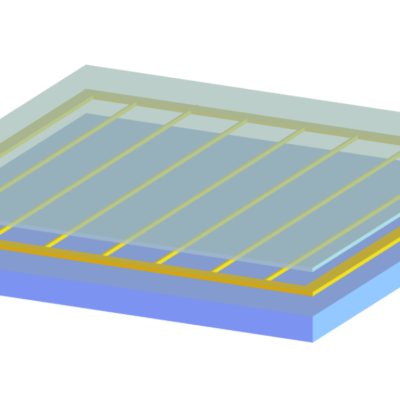
LLNL researchers have developed a relatively large electrochemically active window with low sheet resistance yet has dramatically increased RF transmission. In-situ measurements show an ~40% increase in reflection at 12GHz when tinting for 10 minutes as compared to the off state. The researchers achieved this through combining novel geometric design of the metal traces with the…
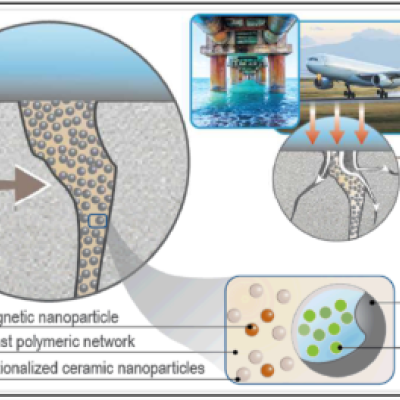
LLNL researchers are developing Concrete Assisted by Particles Sealed Under Large-scale Encapsulation (CAPSULE) to provide a solution that utilizes different biological and engineering approaches to repair aging concrete. It uses an innovative method to
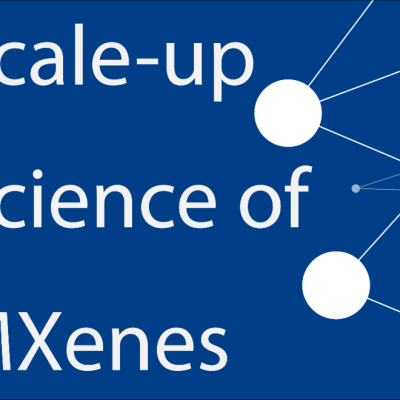
To address these challenges and explore the scale-up science of MXene, LLNL researchers have developed a scalable solution-phase synthesis method to generate MXene with over 70% production yield via top-down exfoliation approaches with non-aqueous solvents and salts. The novel method is a dramatic improvement compared to conventional approaches (10-20%). Furthermore, the shielding…
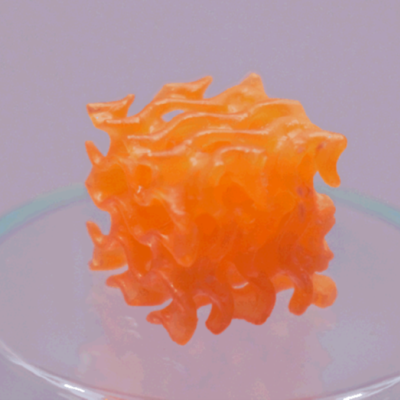
LLNL researchers have developed a method which utilizes functional alcohols to depolymerize polyurethane crosslinked networks. The functional alcohols show 5X increase in the depolymerization efficiency compared with current state of art (e.g. methanol, ethylene glycol). The crosslinked polyurethane networks completely depolymerized into a liquid oligomer within 48 hours at ambient…
LLNL researchers have developed a novel photocurable silicone useful for producing three-dimensional objects via additive manufacturing. The resin formulations consist of a mult-component siloxane polymers with different functionalities, a platinum catalyst, a photoinitiator, and other organic peroxides. The LLNL invention involves controlling the spatial and temporal aspects of the…

LLNL researchers have created a suitably compliant adhesive that is based on a thiol monomer mixed with an epoxy monomer in the presence of metal oxide nanoparticles. When cured into films or pucks, the adhesives are optically transparent with a RI up to ~1.68 at 532 nm with varying shore A hardness in the range of 50 to 98. The adhesive can potentially be mixed and potted between Ti:…
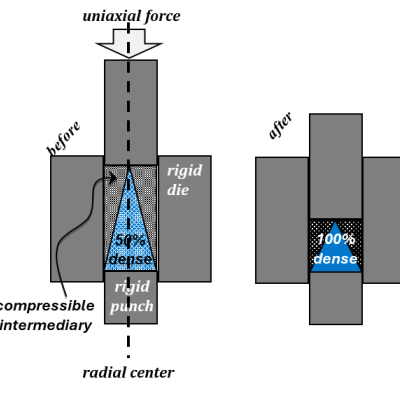
LLNL has developed a novel Production of Readily compressible dies for Enhanced Sintering of Solids (PRESS) method for ceramic parts manufacturing that uses compressible, non-sintering powder materials as a mold which can match the compaction of the ceramic powder starting materials during pressure-assisted sintering. PRESS enables uniform deformation of the part under a constant linear travel…
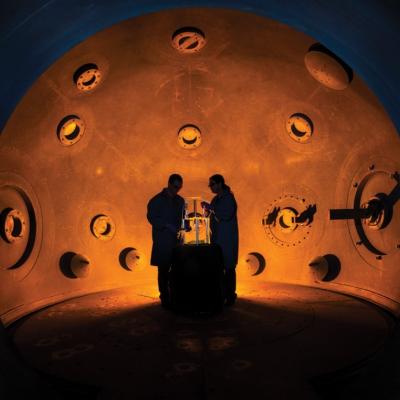
LLNL has developed a method that adds a polyamine based crosslinker and an acid receptor, based on MgO nanoparticles into a polymer bonded PBX, where the polymer binder is a fluoropolymer containing vinylidene difluoride functionality. Crosslinking kinetics can then be controlled by selecting an appropriate amine structure, pressing temperature and optionally the addition of a chemical…
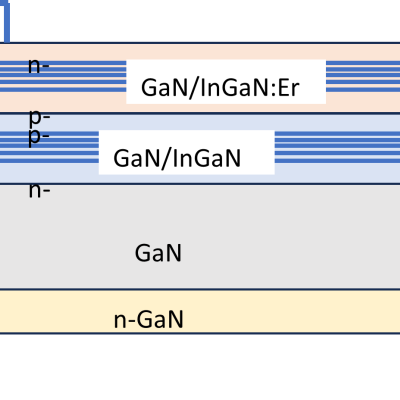
This LLNL invention is a wide bandgap (WBG) or ultra-wide bandgap (UWBG) material comprising a PCSS that is modified, either chemically through alloying and/or mechanically through strain fields, in order to tune the energetic positions of the valence and/or conduction bands and the associated optical transition energies that create and quench the PCSS responsivity.
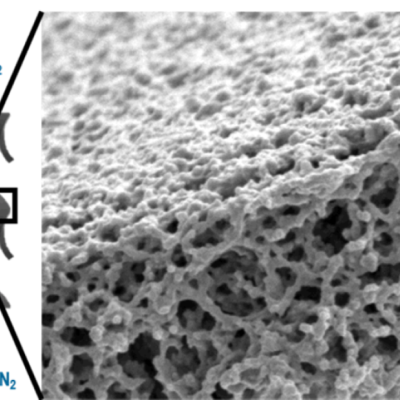
LLNL researchers have developed a self-supporting structural material that promises more efficient carbon capture specifically from air, but generally from all CO2 containing gas sources. The material is produced with a liquid high-amine-content precursor polymer that is functionalized by adding on polymerizable end groups.
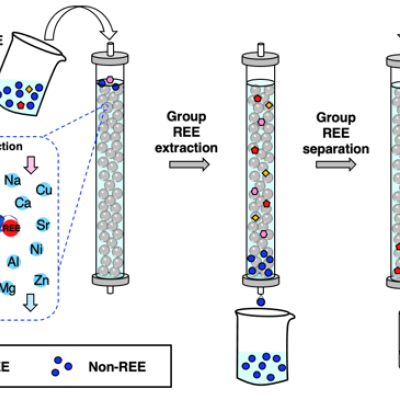
As an important step toward overcoming the technical and environmental limitations of current REE processing methods, the LLNL team has patented and demonstrated a biobased, all-aqueous REE extraction and separation scheme using the REE-selective lanmodulin protein. Lanmodulin can be fixed onto porous support materials using thiol-maleimide chemistry, which can enable tandem REE purification…
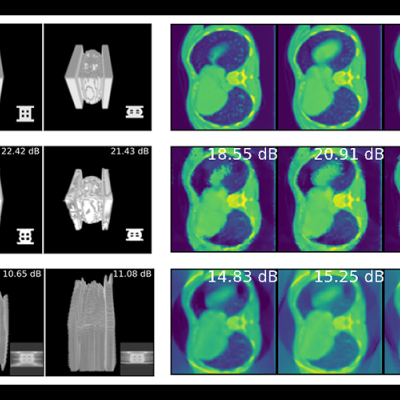
LLNL’s Distributed Implicit Neural Representation (DINR) is a novel approach to 4D time-space reconstruction of dynamic objects. DINR is the first technology to enable 4D imaging of dynamic objects at sufficiently high spatial and temporal resolutions that are necessary for real world medical and industrial applications.
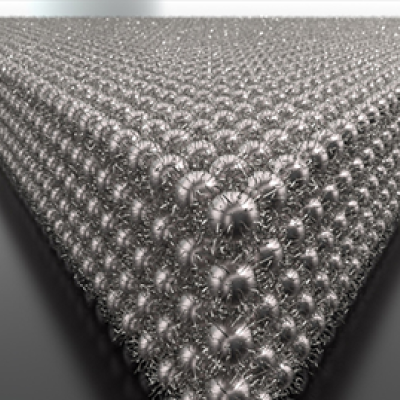
LLNL researchers have developed two approaches to fabricate nanocrystal superlattices for electronic and optoelectronic devices. Nanocrystals covered by this approach include, but are not limited to, metal nanocrystals, semiconducting nanocrystals (quantum dots), and insulating nanocrystals, or a combination of those.
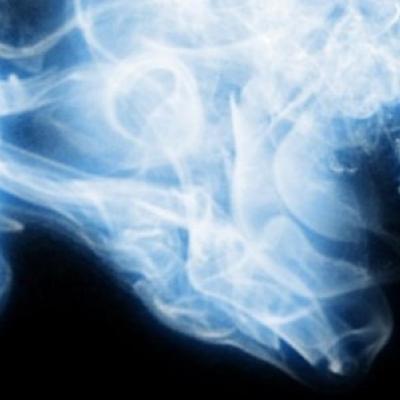
LLNL researchers uses Additive Manufacturing (AM) to create reinforcing scaffolds that can be integrated with High Explosives (HE) or solid rocket fuel with minimal volume fraction. Its main benefit is to create stability in harsh field conditions. Its secondary benefit is providing another method to finely tune blast performance or fuel burn. Creating complex shapes with structural…
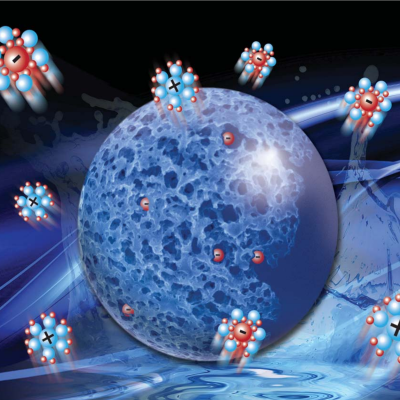
LLNL has a long history of developing aerogels. Because of their high surface area, they have unique physical, chemical, and mechanical properties, which makes aerogels a promising material for use in a variety of technical applications areas ranging from energy storage to catalysis. LLNL researchers are able to tailor the structure and properties to create strong, high-density…

LLNL researchers have developed a TDLAS-based, standalone, real-time gas analyzer in a small form-factor for continuous or single-point monitoring. The system can analyze multiple gases with ultra-high sensitivity (ppm detection levels) in harsh conditions when utilizing wavelength-modulation spectroscopy (WMS).

LLNL researchers have developed a method to enhance the performance of polyelectrolyte membranes by using a humidity-controlled crosslinking process which can be applied to precisely adjust the water channels of the membrane.

LLNL’s invention is a photopolymerizable polymer resin that consists of one or more nitrile-functional based polymers. The resin is formulated for SLA based 3D printing allowing for the production of nitrile-containing polymer components that can then be thermally processed into a conductive, highly graphitic materials. The novelty of the invention lies in (1) the photo-curable nitrile-…
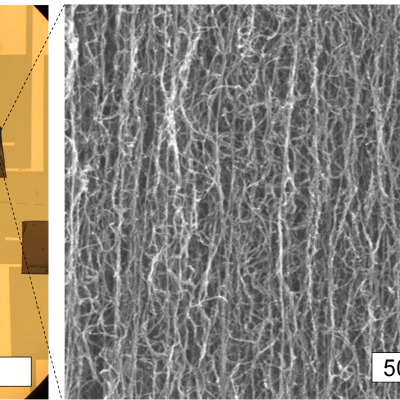
LLNL researchers has devised several design strategies to enable gating of thick architectures (e.g., 2D planar, 3D out-of-plane) made of nanostructures while maintaining substantial surface area available for sensing. Specific examples described in the patent application (2021/0249618) are given for carbon nanotubes (CNTs) and including typical channel gate configurations, gate-all-…

The essence of this invention is a method that couples network architecture using neural implicit representations coupled with a novel parametric motion field to perform limited angle 4D-CT reconstruction of deforming scenes.

A thyristor will stay conducting until the current through the device is zero (“current zero”) or perhaps slightly negative. LLNL’s approach is to use the opticondistor (“OTV”) to force this current zero in order to force the device into an “off” state. By combining a light-activated thyristor with an OTV, a noise-immune, high efficiency, high-power switching device can be…

The researchers’ approach leverages the concept that dopants have high diffusivities in Ga2O3; the key lies in the selection of the appropriate dopant. This LLNL invention describes two device types that employ this design:
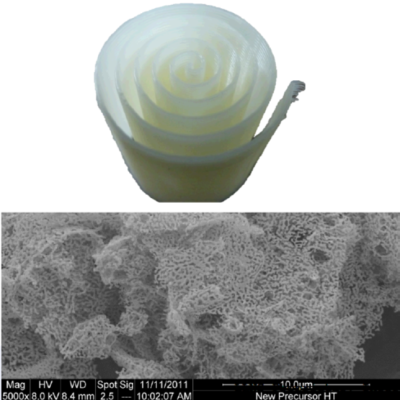
LLNL researchers developed a novel method in preparing the ceramic nanofibrous material, which are used to attract and hold particles as well as unique filter designs. The ceramic fibers are prepared via electro spinning to make sheets of nanofibers. The sheets can then be formed into tubes of high surface area.

LLNL researchers have developed an innovative and uniform single-pot polymer multi-material system, based on a combination of 3 different reactive chemistries. By combining the three different constituent monomers, fine control of mechanical attributes, such as elastic modulus, can be achieved by adjusting the dosage of UV light throughout the additive manufacturing process. This…
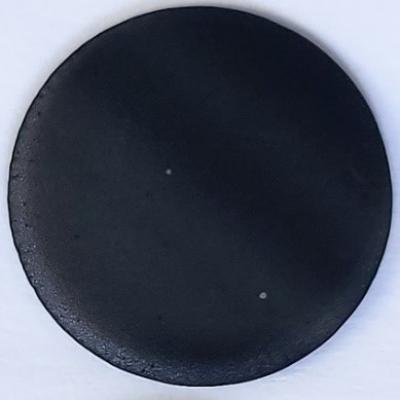
LLNL researchers have developed a method to incorporate gas phase synthesized graphene (GSG) as a unique additive in a UV-crosslinkable polymer formulation. The GSG is added by using a planetary mixer to obtain a homogenous suspension of GSG in polymer. The resulting formulation is highly stable and doesn't show signs of phase separation or solid sedimentation. The polymer formulation is then…
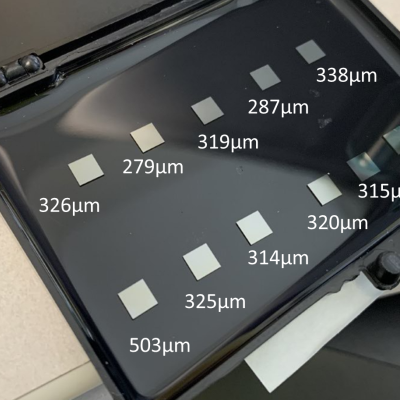
Design and construction of a photoconductive switch requires a diamond photoconductor illuminated by light of a certain excitation wavelength.
Characteristics of the LLNL-developed switch are as follows:

LLNL researchers has developed designs to augment WBG/UWBG-based OALVs to improve their power handling capability under CW operational environments. These designs include:
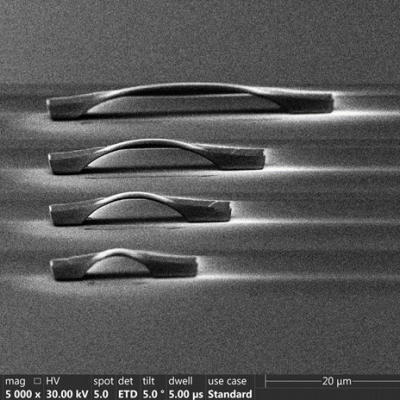
LLNL researchers developed a novel method to nucleate the alpha phase of Tantalum on a polymer surface at room temperature, allowing for the controllable formation of a variety of 3D structures, such as airbridges. Using this method with a subsequent Piranha etch results in the complete removal of the residues of the polymer 'scaffolding' or template while allowing the deposited tantalum…
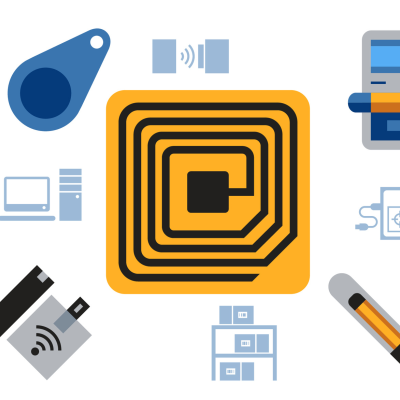
LLNL researchers have developed a novel Radio Frequency Identification (RFID), tracking, powering system and method using coded Ultra-wideband (UWB) signaling. The RFID system is capable of remote powering (activating) multiple passive UWB tags that are located some distance away, which is further than conventional RFID tags. Once the tags are activated, the tags are able to communicate with…

LLNL researchers have developed novel advanced manufactured biomimetic 3D-TPMS (triply periodic minimal surface) membrane architectures such as a 3D gyroid membrane. The membrane is printed using LLNL's nano-porous photoresist technology. LLNL’s 3D-TPMS membranes consist of two independent but interpenetrating macropore flow channel systems that are separated by a thin nano-porous wall…

LLNL researchers have devised a set of design principles that facilitates the development of practical TPMS-based two fluid flow reactors.; included in the design are these new concepts:

LLNL researchers have developed a Li-Sn-Zn ternary alloy and its method of production. Instead of traditional alloying techniques, the alloy was synthesized using mechanical alloying (high energy ball milling). With high purity elemental powders of lithium, tin and zinc, LLNL researchers were able to prepare Li60Sn20Zn20 as well as Li70Sn20Zn10 nanopowders.
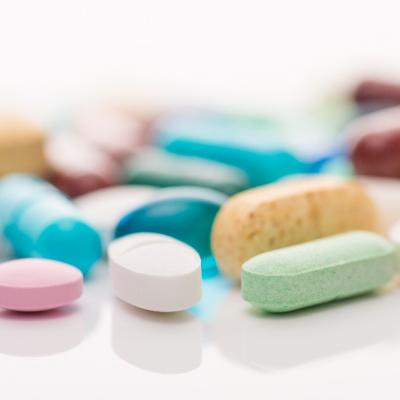
LLNL researchers have developed a technology suite that includes several methods for detecting trace levels of illicit drugs even in mixtures. These methods can be used as a rapid screening test for incoming samples; for the samples that were determined to contain detectable amounts, they would undergo final verification using conventional laboratory analytical techniques.

LLNL researchers have invented an ultrafast PCSS to drive a high-power laser diode with arbitrary pulse widths. These devices operate by supplying a high voltage (>10 kV) to one side of the switch. A short pulse of light illuminates the semiconductor, instantly turning it from highly resistive to highly conductive. Ultrawide bandgap (UWBG) semiconductors are used to achieve sub-…
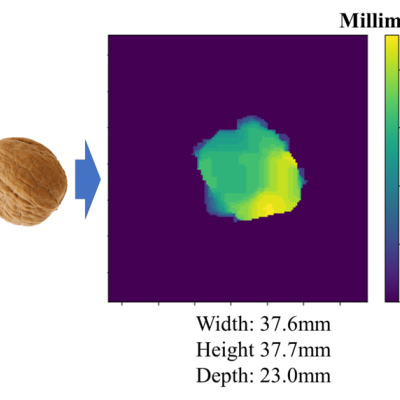
LLNL’s novel technology automates the inspection process by using a scanning system that captures data within the walnut shell without having to open the shell. The system output gives a visual image inside the walnut shell sufficient to evaluate and rate the quality of the walnut. The system uses a camara and radar that can capture data at a rapid rate. This improves speed and…
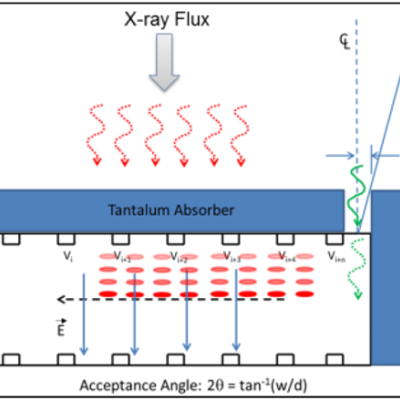
The approach is to develop a solid-state X-ray imager based on the architecture of the Silicon Drift Detector (SDD) which uses a series of cathode strips on both sides of a silicon wafer to achieve bulk depletion and electron drift. The invention leverages this SDD functionality to achieve signal stretching of liberated charge carriers from X-Ray photons that converts the time domain…

The approach is to leverage the fact that a momentary “load” equal to the power transmission line impedance, (Z0), during the transient can suppress its propagation. Z(0) is typically a fixed impedance of several hundred ohms based on the geometry of most single wire transmission lines.
So, an isolated self-powered opticondistor (OTV) system may provide an ultrafast method of…

LLNL’s novel approach is to use diamond substrates with the desired donor (nitrogen) and acceptor (boron) impurities. In order to optically activate these deep impurities, the invention requires at least one externally or internally integrated light source. The initial exposure to light can set up the desired conduction current, after which the light source could be turned…
![Filled (8,8) (left) and (15,15) (right) CNTs with [EMIM+][BF4- ] using SGTI with the proposed spliced soft-core potential (SSCP) approach](/sites/default/files/styles/scale_exact_400x400_/public/2023-10/Filled%20CNTs%20using%20SGTI.png?itok=Dy0ObN7i)
LLNL researchers have developed a novel simulation methodology using slow growth thermodynamic integration (SGTI) utilizing spliced soft-core interaction potential (SSCP). The approach to filling the molecular enclosures is a nonphysical one. Rather than filling the pores from the open ends this method creates steps in the algorithm that allow molecules to pass through the pore…
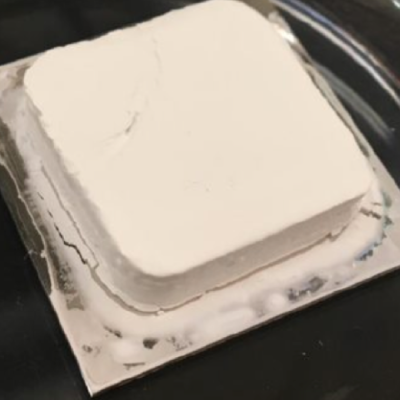
LLNL researchers have developed a method to manufacture solid standard reference materials (SRMs) that can be used as calibration standards for elemental and isotopic analyses. The novel method allows for the growth of compositionally controlled particles as starting materials, and the synthesis of SRMs with single or multi-component(s) through electrophoretic deposition (EPD). The SRMs are…

Instead of producing individual DSRDs and bonding them, Tunnel DSRD's entire stack structure is grown epitaxially on a n- or p-type silicon wafer, resulting in a novel, “monolithic” stacked DSRD. A tunnel diode is essentially a diode with very highly doped p and n regions such that the reverse breakdown voltage is 200 meV or lower.

A set of images generated by multiple passes over the same area can be coherently integrated by this technology developed by LLNL researchers. The primary difficulty with coherently combining different passes is registering the images obtained from each pass, particularly if a pass only partially covers a given area.

LLNL inventors have shown that the optical material properties (transmission, reflectance, color) of an assembled device can be dynamically tunable using innovative core-shell nanomaterials and a structured composite crystal/colloid design. These smart optical materials are assembled from nanosized constituents that have a native surface charge. The nanoparticles can be manipulated by an…
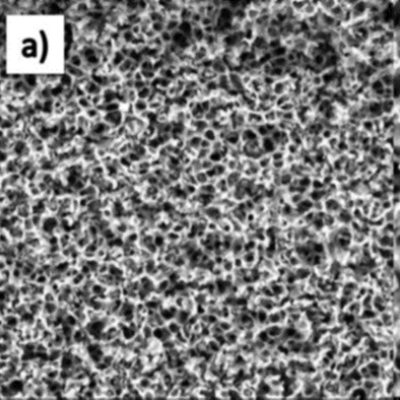
LLNL inventors have created innovative steps in the synthesis, carbonation and activation steps of aerogel manufacturing that allows for large scale production. These steps are:
1. Synthesis: a novel pre-cure step with subsequent gelation (RF precursor solution is heated with stirring to achieve a mixed liquid intermediate temperature, the precursor solution is then allowed to cool,…

CMI—a DOE Energy Innovation Hub—is a public/private partnership led by the Ames Laboratory that brings together the best and brightest research minds from universities, national laboratories (including LLNL), and the private sector to find innovative technology solutions to make better use of materials critical to the success of clean energy technologies as well as develop resilient and secure…
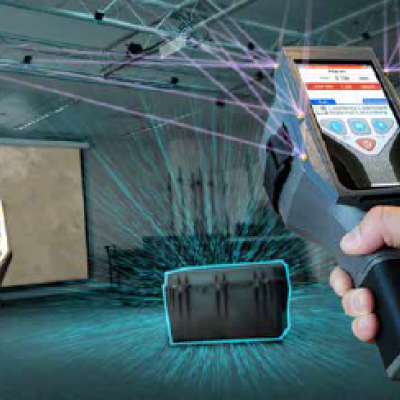
To address the need for realistic and high-fidelity first responder training, a multidisciplinary team at LLNL has worked to establish the new gold standard simulator called TARANTULA (Tactical Augmented Reality Applications for Nuclear Emergency Support Team (NEST) Training using Livermore Analytics). TARANTULA is a scientifically accurate, fully functional, field-deployable simulator that…
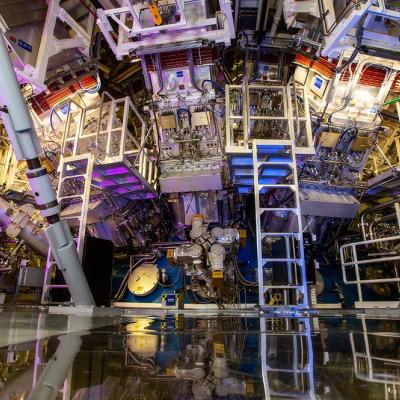
This novel detector for characterizing IFE implosions is an alternative to the current RTNADs to measure neutron fluxes > 3x1011 neutrons/cm2 at high shot rates. The detector consists of a stack of small square metal wafers separated by thin insulating spacers. Every other wafer is held at high voltage while the remaining wafers are grounded. The stack acts as an…

To overcome challenges that existing techniques for creating 3DGs face, LLNL researchers have developed a method that uses a light-based 3D printing process to rapidly create 3DG lattices of essentially any desired structure with graphene strut microstructure having pore sizes on the order of 10 nm. This flexible technique enables printing 3D micro-architected graphene objects with complex,…
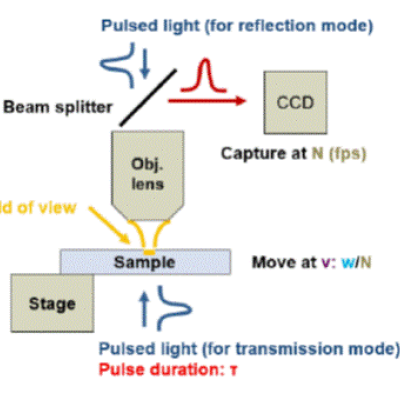
LLNL’s novel approach is to use a continuous moving camera with a scan speed of >1 mm/sec and a frame rate of 100 frames per second. The key is to have a light source that flashes with a duration of one nanosecond, thus essentially freezing the image with no blur. Clear images of high resolution can then be captured through a high-magnification objective lens (reflection mode)…
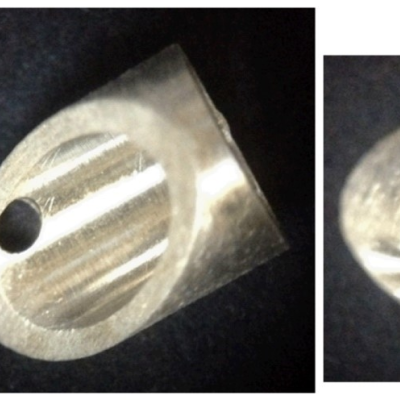
U.S. Patent No. 11,555,965 describes LLNL’s invention of “Illumination Frustums” for photoconductive switches to capture and “frustrate” the light from leaving the frustum. LLNL researcher’s latest novel invention, “Twister Oven”, achieves this by encouraging laser light absorption in a photo conductor material. Light enters the oven twisting and reflecting, making near normal…

For cooling a high power device, the novel approach is to use a thermoelectric cooler (TEC)-based embedded substrate with proper selection of the TEC material as an active cooler. The packaging configuration of TEC allows cooling the entire die without the use of a fluid. The process is compatible with the thin film TEC material. Standard semiconductor processes can be used…

The approach is to use peroxides to modify the reaction kinetics in the production of polysiloxanes. A radical initiator in the presence of a hydride-terminated polysiloxane will increase the rate of curing and reduce manufacturing costs. At a minimum a formulation would contain a hydride-terminated polysiloxane, a platinum catalyst, and an initiator that generates radicals. …

The novel technology developed at LLNL is a new, effective means of separating and concentrating Sc from lanthanides and non-REEs in unconventional, waste-derived feedstocks, thereby transforming an essentially valueless solution into valuable Sc concentrates. The results represent an important advance in the development of an environmentally sustainable alternative to organic solvent-…
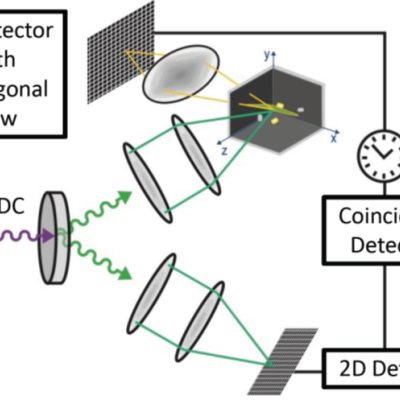
LLNL’s approach to the development of a wide-field, three-dimensional quantum (3DQ) microscope is to harness quantum entangled photons to form simultaneous 3D optical images, which could be a new paradigm for 3D volumetric imaging of biological specimens. The 3DQ microscope is comprised of a novel optical system with highly sensitive detectors and an on-demand light source of entangled…
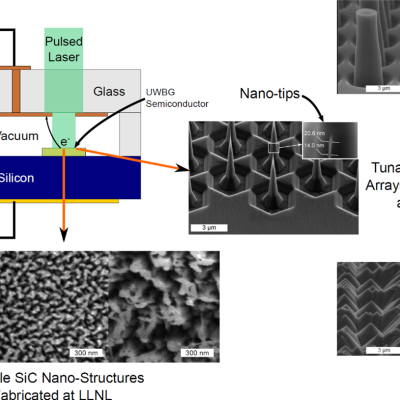
LLNL researchers faced this challenge by bridging the gap between VEDs and solid-state electronics (SSE). Their approach was to create a hybrid vacuum microelectronic device (VMD) architecture that combines the properties of vacuum as the electronic medium and the compact form factor and manufacturing scalability of semiconductor microelectronic chips.

LLNL researchers have discovered that some inexpensive and commercially available molecules used for other applications, could render certain lanthanide and actinide elements highly fluorescent. These molecules are not sold for applications involving the detection of REEs and actinides via fluorescence. They are instead used as additives in cosmetic products and/or in the pharmaceutical…

For this method, a Silicon on Insulator (SOI) wafer is used to tailor etch rates and thickness in initial steps of the process. The simple three step process approach is comprised of grayscale lithography, deep reactive-ion etch (DRIE) and liftoff of the SOI wafer. The liftoff process is used to dissolve the insulating layer, thus separating sections of the wafer as individual…

LLNL’s novel approach combines 2-color spectroscopy with CRDS, a combination not previously utilized.

The approach is to use Charge Balance Layers (CBLs) to create a superjunction device in wide bandgap materials. These CBLs enable the device to effectively spread the electric field over 2- or 3-dimensions within a semiconductor voltage sustaining layer instead of 1-dimension, thereby increasing the maximum voltage a device is capable of withstanding. The challenge of using CBLs is…
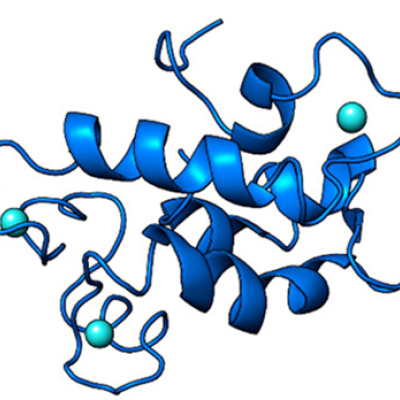
LLNL researchers along with collaborators at Pennsylvania State University have found that a newly discovered natural protein named Lanmodulin (LanM) could be a potential candidate for extracting REEs from ore or other sources such as coal ash as well as purifying the REE material. Through joint research, the scientists found that LanM undergoes a large conformational change in response…
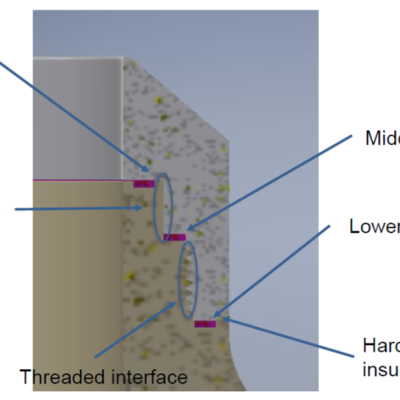
The approach is to build a high voltage insulator consisting of two materials: Poly-Ether-Ether-Ketone (“PEEK”) and Machinable Ceramic (“MACOR”). PEEK has a high stress tolerance but cannot withstand high temperatures, while MACOR has high heat tolerance but is difficult to machine and can be brittle. MACOR is used for the plasma-facing surface, while PEEK will handle the…

Design and construction of a photoconductive switch requires a diamond photoconductor illuminated by light of a certain excitation wavelength. The diamond material is specifically doped with substitutional nitrogen, which act as a source of electrons. The device architecture allows maximum light entering the aperture. The top and bottom electrodes are made of ultra wide band…

The approach is to use a custom-designed frustrum and attach it to the optical fiber that connects to the PCSS. Light from the fiber enters the frustrum, spreads out, and enters the PCSS. Any unabsorbed light re-enters the frustrum and, because of its geometry, reflects back into the PCSS itself with only a negligible fraction escaping from the fiber. The shape of the novel…

LLNL researchers have developed a custom formulated extreme low viscosity reactive silicone resin base modified with a temperature dependent thixotrope along with a modified catalyst package. The uncatalyzed composition is capable of accepting loadings of polymer microspheres sufficient to produce a cured bulk rubber that has a density as low as 0.3 g/cc, thus compatible with high-…

LLNL’s SAS technology embedded within a facility is developed to sense, detect, localize, alert, and communicate an active shooter(s) to first responders. It relies on three integrated compact sensors that detect sound, infrared light (from the muzzle blast) and vibrations emanating from a gunshot. Fusing the data from these detectors minimizes false alarms.

The key to time-reversal for an active shooter detection/tracking application is being able to estimate the space-time transfer function (Green’s function) between source-enclosure-receiver. This approach begins with the acoustic mapping of an indoor muzzle blast.
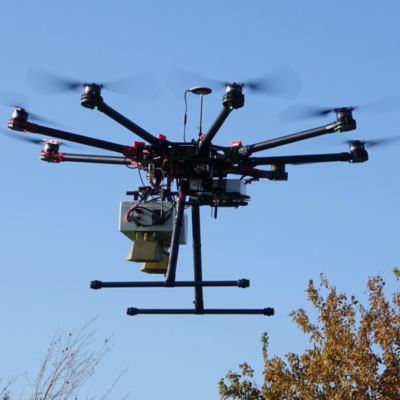
LLNL researchers have developed a lightweight drone-based GPR array that when flown over a surface with laid and/or buried objects could image the field of view and be able to detect targets and discriminate them from clutter. The imaging method employs a modified multi-static architecture to provide the highest signal to noise with the lowest system weight, making it ideal for airborne or…
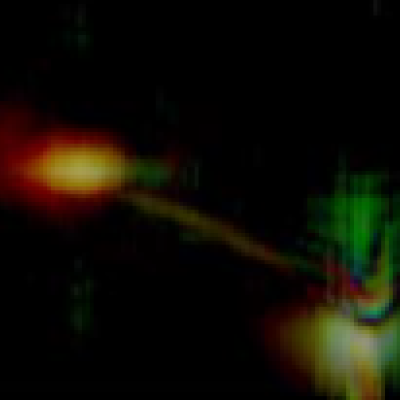
This technology uses three different frequency bands to create intensity maps of returned signals. Signals have traditionally been displayed as raw return data. The intensity of the return is represented by level of brightness. Assignment of a scalar value for intensity is used to determine the brightness of the image. In this technology, each frequency is given a designated…

The suppressor has a series of chambers for the propellant to flow through, but unlike all traditional suppressors, the chambers are open, not closed. The propellant is not trapped. It keeps moving. We manage its unimpeded flow through the suppressor. This is the key underlying technology of our suppressor design that enables all the improvements over the 100-year old traditional designs.
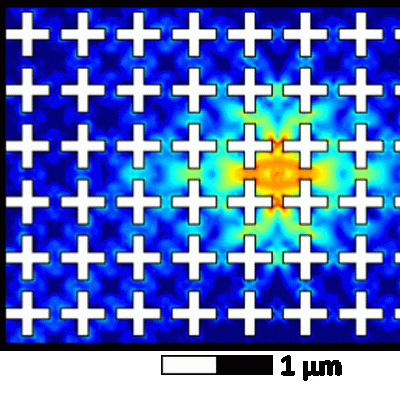
LLNL has developed a method of extending device lifetimes by imprinting into the device a shape that excludes specific vibrational modes, otherwise known as a phononic bandgap. Eliminating these modes prevents one of the primary energy loss pathways in these devices. LLNL’s new method enhances the coherence of superconducting circuits by introducing a phononic bandgap around the system’s…
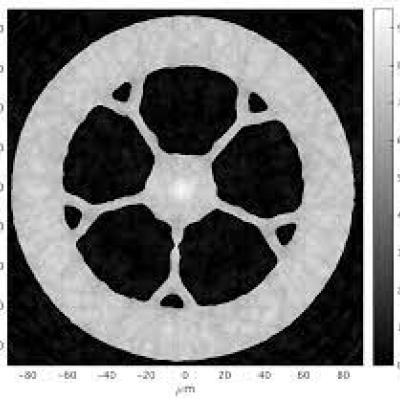
To solve these challenges using new and existing CT system designs, LLNL has developed an innovative software package for CT data processing and reconstruction. Livermore Tomography Tools (LTT) is a modern integrated software package that includes all aspects of CT modeling, simulation, reconstruction, and analysis algorithms based on the latest research in the field. LTT contains the most…
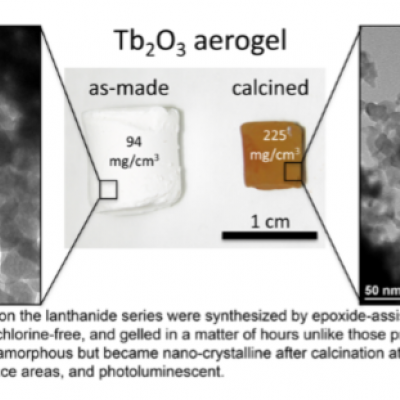
The innovators have modified a epoxide-assisted sol-gel method to produce chlorine-free, monolithic REO aerogels in just a matter of hours. This method was demonstrated for the lanthanide series. An important factor in realizing the sol-gel transition with the nitrate precursor was the addition of a key ingredient and moderate heat.. These alcogels can then be dried and calcined to produce…

Livermore Lab researchers have developed a tunable shaped charge which comprises a cylindrical liner commonly a metal such as copper or molybdenum but almost any solid material can be used and a surround layer of explosive in which the detonation front is constrained to propagate at an angle with respect to the charge axis. The key to the concept is the ability to deposit a surrounding…

Livermore Lab researchers have developed a method that combines additive manufacturing (AM) with an infill step to render a final component which is energetic. In this case, AM is first used to print a part of the system, and this material can either be inert or energetic on its own. A second material is subsequently added to the structure via a second technique such as casting, melt…

LLNL's 3D X-ray imager combines two different hardware pieces. The first is an x-ray optic with a depth-of-field that is small compared to the object under investigation. Reflective Wolter type x-ray optics are one such design. These hollow optics have a relatively large collection efficiency and can be designed with a large field of view. The depth of focus, which is the distance over which a…
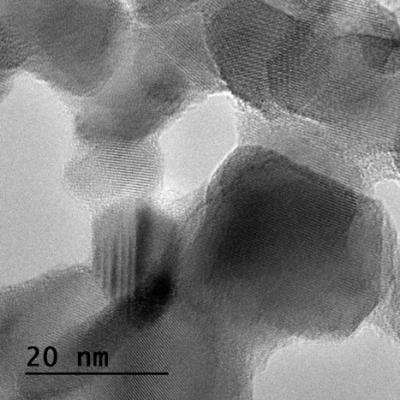
Livermore researchers have developed two novel TiCl4 based non-alkoxide sol-gel approaches for the synthesis of SiO2/TiO2 nanocomposite aerogels. Composite SiO2-TiO2 aerogels were obtained by epoxide-assisted gelation (EAG route) of TiCl4/DMF solution in the presence SiO2 aerogel particles. Additionally, the same TiCl4/DMF solution was employed to prepare SiO2@TiO2 aerogels by a facile one-…
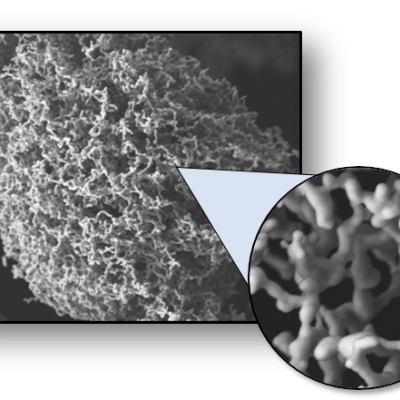
The LLNL method is based on freeze‐casting of aerosolized and pressurized metal salt solutions and subsequent thermal processing. This method generates both porous particles with sizes down to one micron and macroscopic monoliths with nanometer scale ligaments/struts. The material's density can be controlled during the freeze‐dried stage. Compared to conventional approaches, this method…
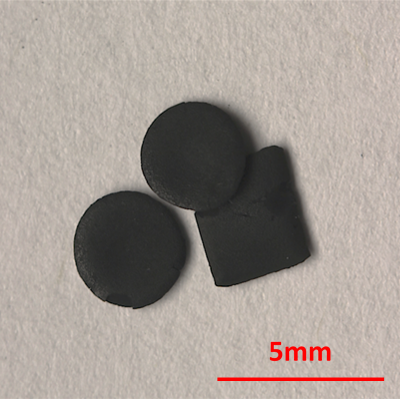
LLNL uses the additive manufacturing technique known as Electrophoretic Deposition to shape the source particle material into a finished magnet geometry. The source particle material is dispersed in a liquid so that the particles can move freely. Electric fields in the shape of the finished product then draw the particles to the desired location to form a “green body”, much like an unfired…

LLNL researchers have designed and tested performance characteristics for a multichannel pyrometer that works in the NIR from 1200 to 2000 nm. A single datapoint without averaging can be acquired in 14 microseconds (sampling rate of 70,000/s). In conjunction with a diamond anvil cell, the system still works down to about 830K.
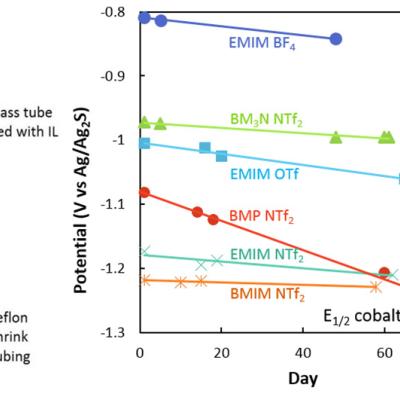
LLNL has developed a reference electrode that is a great improvement on the widely used silver or platinum wire QRE commonly used in electrochemistry in ionic liquids. This new reference electrode, based on a silver-sulfide coated silver wire, exhibits greatly improved stability over a QRE. The stability of our RE approaches that of the Ag/Ag+ RE, but unlike the Ag/Ag+ RE, the RE reported here…
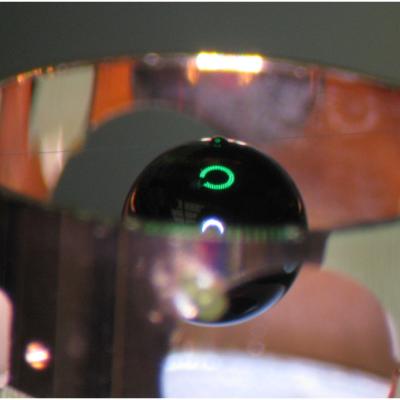
LLNL has developed a liquid-free method that increases the overall mechanical resistance of self-supported, carbon nanotube assemblies through nanoscale reinforcement by gas-phase deposition of a thermally cross-linkable polymer. Polymer-reinforcement increases the strength of CNT yarns after crosslinking. For example, a minimal amount (<200 nm) of poly-glycidyl metacrylate (PGMA) deposited…

By combining 3D printing and dealloying., researchers at LLNL have developed a method for fabricating metal foams with engineered hierarchical architectures consisting of pores at least 3 distinct length scales. LLNL’s method uses direct ink writing (DIW), a 3D printing technique for additive manufacturing to fabricate hierarchical nanoporous metal foams with deterministically controlled 3D…
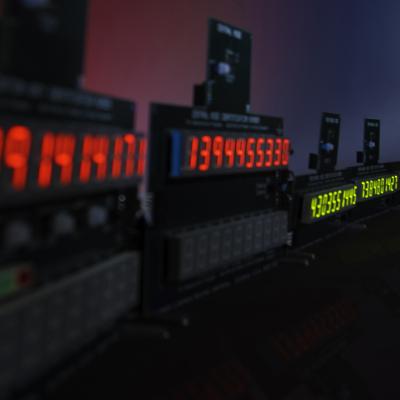
LLNL's method of equivalent time sampling incorporates an embedded system that generates the pulses used to trigger the external circuit and the data acquisition (DAQ). This removes the external reference clock, allowing the overall system clock rate to change based on the ability of the embedded system. The time delays needed to create the time stepping for equivalent time sampling is done by…
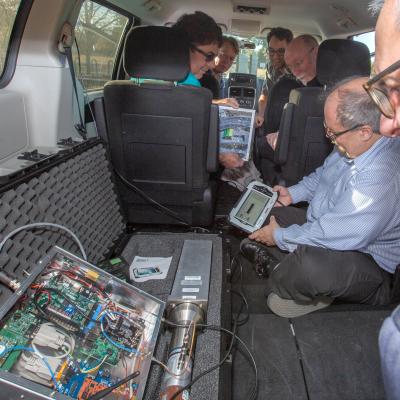
There are three main components to the RaFTS system: 1) the radiation detector, which can be of any type and from any manufacturer; 2) the RaFTS electronics, which produce the electronic pulses that are injected into the electronics of the radiation detector through a (to be) standardized port interface; and 3) the exercise scenario, which defines the synthetic radiation field and time-varying…
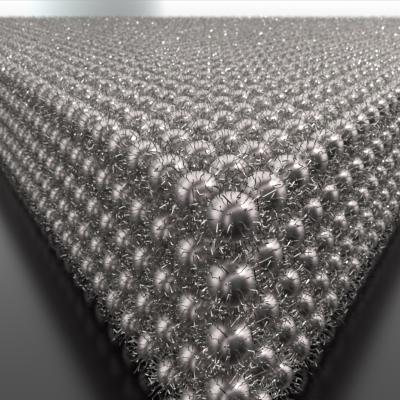
The novel LLNL technique uses electric fields to drive and control assembly. In the literature such methods have heretofore only formed disordered ensembles. This innovative method increases local nanocrystal concentration, initiating nucleation and growth into ordered superlattices. Nanocrystals remain solvated and mobile throughout the process, allowing fast fabrication of ordered…

LLNL researchers have developed an alternative route to protective breathable membranes called Second Skin technology, which has transformative potential for protective garments. These membranes are expected to be particularly effective in mitigating physiological burden.
For additional information see article in Advanced Materials “Ultrabreathable and Protective Membranes with Sub-5…
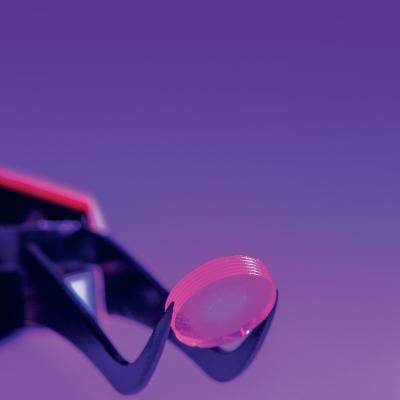
LLNL researchers have developed a custom resin formulation which uses a dispersing solvent and only a multifunctional monomer as the binding agent. The dispersing solvent system typically used has multiple components meant to achieve excellent dispersal of silica in order to create a flowable resin (rather than a paste). The dispersing agent has low vapor pressure, which allows the 3D printed…
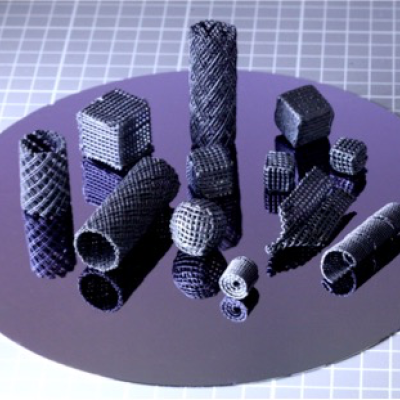
LLNL researchers have developed a novel method of 3D printing regular microstructured architectures and subsequent complex macrostructures from additively manufactured bio-based composite thermoset shape memory polymer composite materials. This technology for 3D additively manufactured parts utilizes up to a 4 axis control DIW system for fabricating bio based thermally cured epoxy based SMP…
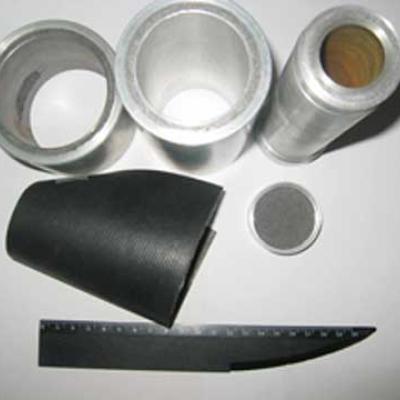
LLNL researchers have developed the hardware and chemistry to allow additive manufacturing of short carbon fibers in a thermoset polymer matrix which have a high degree of structural alignment over conventional cast or pressed short/chopped carbon fiber polymer composites.
The invention is based on the shear dispersal, alignment and concentration of fiber fraction within a resin…
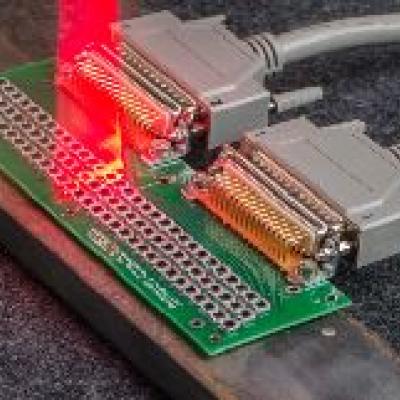
LLNL’s Optically-based Interstory Drift Meter System provides a means to accurately measure the dynamic interstory drift of a vibrating building (or other structure) during earthquake shaking. This technology addresses many of the shortcomings associated with traditional strong motion accelerometer based building monitoring.
LLNL’s discrete diode position sensitive device is a newly…
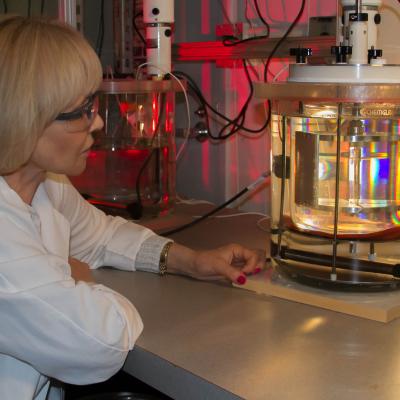
LLNL has identified solution-grown organic crystals having scintillation efficiency not only close to, but even exceeding that of stilbene.. LLNL's invention relates to a new class of neutron detectors based on scintillation response of organic single crystals. More specifically, the use of organic molecules grown from solution and to molecules including the basic benzene or phenyl structure…
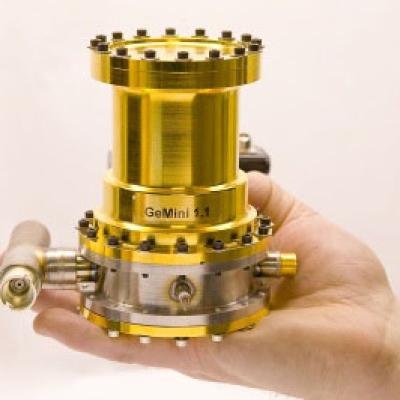
LLNL has developed a radiation detector that cools to operating temperatures in 1-2 hours using two separate cooling stages. The first cooling brings the instrument to operating temperature. The embedded second cooling system achieves portable detection that can be sustained for 8-12 hours.
In addition, an integrated, hermetically-sealed package has been developed complete with…

Nanomaterials that are emerging out of cutting edge nanotechnology research are a key component for an energy revolution. Carbon-based nanomaterials are ushering in the "new carbon age" with carbon nanotubes, nanoporous carbons, and graphene nanosheets that will prove necessary to provide sustainable energy applications that lessen our dependence on fossil fuels.
Carbon aerogels (CAs)…

LLNL's high fidelity hydrocode is capable of predicting blast loads and directly coupling those loads to structures to predict a mechanical response. By combining this code and our expertise in modeling blast-structure interaction and damage, along with our access to experimental data and testing facilities, we can contribute to the design of protective equipment that can better mitigate the…

To overcome limitations with cellular silicone foams, LLNL innovators have developed a new 3D energy absorbing material with tailored/engineered bulk-scale properties. The energy absorbing material has 3D patterned architectures specially designed for specific energy absorbing properties. The combination of LLNL's capabilities in advanced modeling and simulation and the additive…
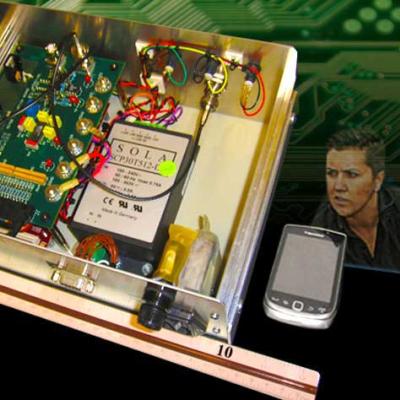
The technology that is available has the capability to inject realistic radiation detection spectra into the amplifier of a radiation detector and produce the all the observables that are available with that radiation detection instrument; count-rate, spectrum, dose rate, etc.
The system uses the capability of LLNL to generate the source output for virtually any source and determine…
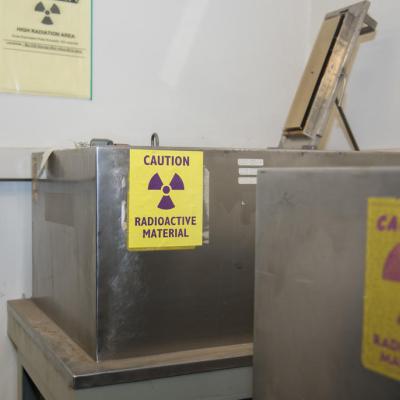
The invention utilizes the statistical nature of radiation transport as well as modern processing techniques to implement a physics-based, sequential statistical processor. By this we mean that instead of accumulating a pulse-height spectrum as is done in many other systems, each photon is processed individually upon arrival and then discarded. As each photon arrives, a decision is…
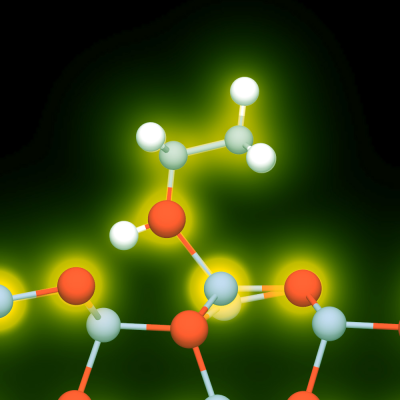
Chemical and biological sensors based on nanowire or nanotube technologies exhibit observable ultrasensitive detection limits due to their unusually large surface-to-volume architecture. This suggests that nanosensors can provide a distinct advantage over conventional designs. This advantage is further enhanced when the nanosensor can harvest its meager power requirements from the surrounding…
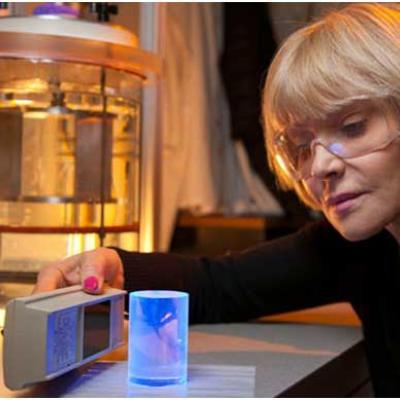
Scientists at Lawrence Livermore National Laboratory have developed a plastic that can detect neutrons, something previously thought impossible.
Livermore scientists demonstrated a plastic scintillator that can discriminate between neutrons and gamma rays with a polyvinyltoluene (PVT) polymer matrix loaded with a scintillating dye, 2,5-diphenyloxazole (PPO). They have found that…
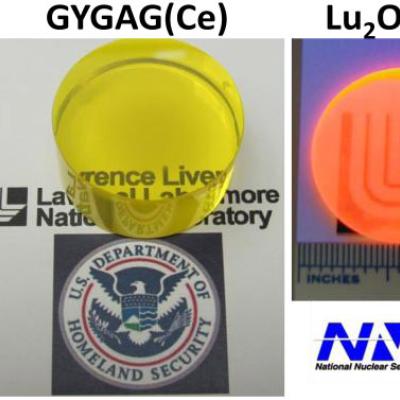
Transparent ceramic fabrication allows the production of gadolinium- , lutetium-, and terbium-based garnets which are difficult to grow by melt techniques due to phase instabilities. Phase stabilization of the garnets is accomplished by the addition of the intersubstitutional ions, Gallium and/or Scandium.
Scientists have developed many versatile and scaleable fabrication methods.…
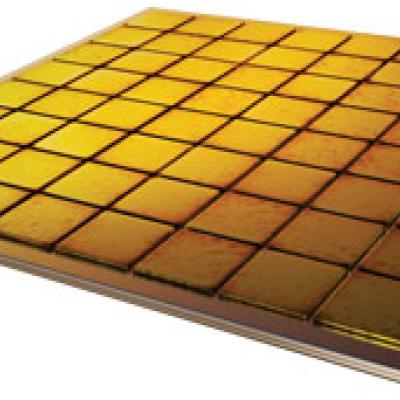
LLNL's neutron "Pillar Detector" fabrication technology uses semiconductor-based micro-structured elements as an electrical signal generation medium for the detection of neutrons. These materials in the form of semiconductor "pillars" embedded in matrix of high cross-section neutron converter materials (such as Boron) that emit charged particles upon interaction with neutrons. These charged…
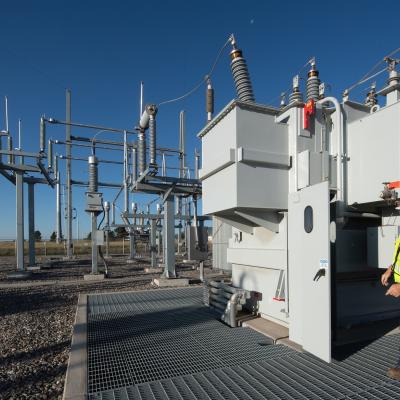
An invention at LLNL uses a mixture of solid and liquid dielectric media. This combination has properties that are an improvement over either separately. The solid phase, in the form of small pellets, inhibits fluid motion, which reduces leakage currents, while the liquid phase (dielectric oil) provides self-repair capabilities. Also, since the media is removable, the high voltage equipment…

LLNL researchers have grown and characterized scintillator crystals of Strontium Iodide (SrI2). Scintillator energy resolution and light yield proportionality surpass NaI and are similar to LaBr3. The SrI2 scintillators doped with europium (Eu) exhibit very high light yields (> 100,000 photons/MeV), extremely good energy resolution (<3% at 662 keV) and excellent light yield…
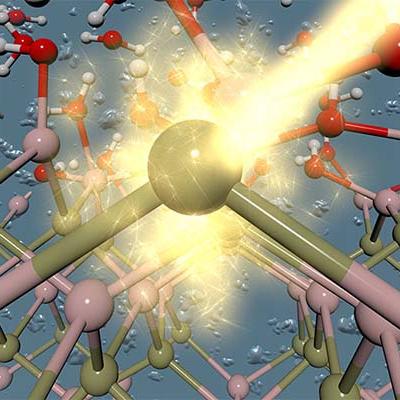
Dubbed the "LLNL Chemical Prism", the LLNL system has use wherever there is a need to separate components of a fluid. A few examples include:
- Chemical detection for known and previously unknown chemicals or substances
- Separation of biomolecules from a cellular extract
- Fractionation of a complex mixture of hydrocarbons
- Forensic analysis of…

The Optical Transconductance Varistor (OTV, formerly Opticondistor) overcomes depletion region voltage limitations by optically exciting wide bandgap materials in a compact package. A 100μm thick crystal could have the capability approaching 40kV and would replace numerous equivalent junction devices. Thus, unlike present junction transistors or diodes, this wide bandgap device can be stacked…
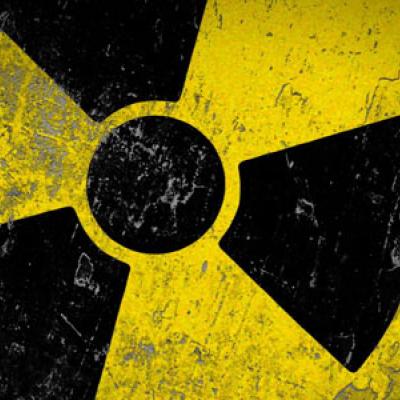
The LLNL detector measures radiation over a large dynamic range, spanning both high hazardous levels and weak levels, including natural background radiation. In weak radiation fields, the detector also measures gamma-ray spectra. The cost of the detector is significantly less than the total cost of existing separate detectors that could perform the same measurements.

LLNL's X-ray spectrometers based on STJ have been developed for high-resolution soft X-ray spectroscopy. STJ consist of two superconducting thin film electrodes separated by a thin insulating tunnel barrier. They measure X-ray energies from the increase in tunneling current after X-ray absorption in one of the electrodes excites additional charge carriers above the superconducting energy gap.…

LLNL has developed a wide band (WB) ground penetrating radar (GPR) technology to detect and image buried objects under a moving vehicle. Efficient and high performance processing algorithms reconstruct images of buried or hidden objects in two or three dimensions under a scanning array. The technology includes a mobile high-performance computing system allowing GPR array sensor data to be…

LLNL has developed novel nanoporous carbon materials for the surface-stress-induced actuator technology. The morphology of these materials has been designed to combine high surface area and mechanical strength. The process allows for the fabrication of large monolithic pieces with low densities and high structural integrity. One actuation technology relies on electrochemically- induced changes…

